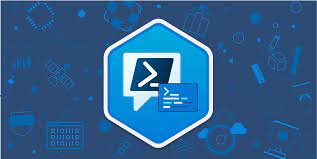PowerShell is a command-line shell and scripting language developed by Microsoft for system administration and automation tasks in the Windows operating system. It provides a powerful and flexible environment for managing and controlling Windows-based environments efficiently. Here’s an overview of PowerShell and its key features:
- Command-Line Interface (CLI): PowerShell offers a command-line interface that allows users to interact with the operating system and execute commands. It provides a rich set of commands, known as cmdlets, which perform specific tasks and can be combined to create powerful automation workflows.
- Object-Oriented Shell: Unlike traditional command-line interfaces that primarily deal with text, PowerShell treats data as objects. Every command in PowerShell returns structured objects that can be easily manipulated and processed. This object-oriented approach simplifies data manipulation and enables easy access to specific properties and values.
- Extensive Command Library: PowerShell comes with a vast library of built-in cmdlets that cover various aspects of system administration. These cmdlets enable administrators to manage files and folders, manipulate the registry, configure system settings, manage services, and perform many other administrative tasks.
- Scripting Language: PowerShell is not just a command-line shell; it is also a full-fledged scripting language. It provides a rich set of programming constructs, including variables, loops, conditionals, functions, and error handling. This scripting capability allows administrators to automate repetitive tasks, create complex automation workflows, and build custom tools.
- Integration with .NET Framework: PowerShell is built on top of the .NET Framework, which provides access to a wide range of system APIs and libraries. This integration allows administrators to leverage the power of .NET by accessing system components, interacting with web services, and utilizing third-party libraries directly from PowerShell scripts.
- Pipelines and Filtering: PowerShell allows the output of one command to be piped as input to another command, enabling powerful data processing and filtering operations. This pipeline capability simplifies complex data manipulation tasks and facilitates the creation of efficient automation workflows.
- PowerShell Remoting: PowerShell supports remote administration through a feature called PowerShell Remoting. It enables administrators to execute PowerShell commands and scripts on remote systems, making it easier to manage and control distributed environments.
- Script Execution Policies: PowerShell includes script execution policies that control the execution of scripts to ensure system security. Administrators can configure these policies to allow or restrict script execution based on their security requirements.
- Modules and Extensibility: PowerShell is highly extensible and supports the creation of custom cmdlets, functions, and modules. Modules are self-contained units that encapsulate scripts, cmdlets, and other resources. They can be easily shared and distributed, allowing administrators to extend PowerShell’s functionality and reuse administrative tasks.
Overall, PowerShell provides a comprehensive and efficient environment for system administration and automation in Windows-based environments. Its rich command library, scripting capabilities, object-oriented nature, and integration with the .NET Framework make it a powerful tool for managing and controlling Windows systems.
SHARE
